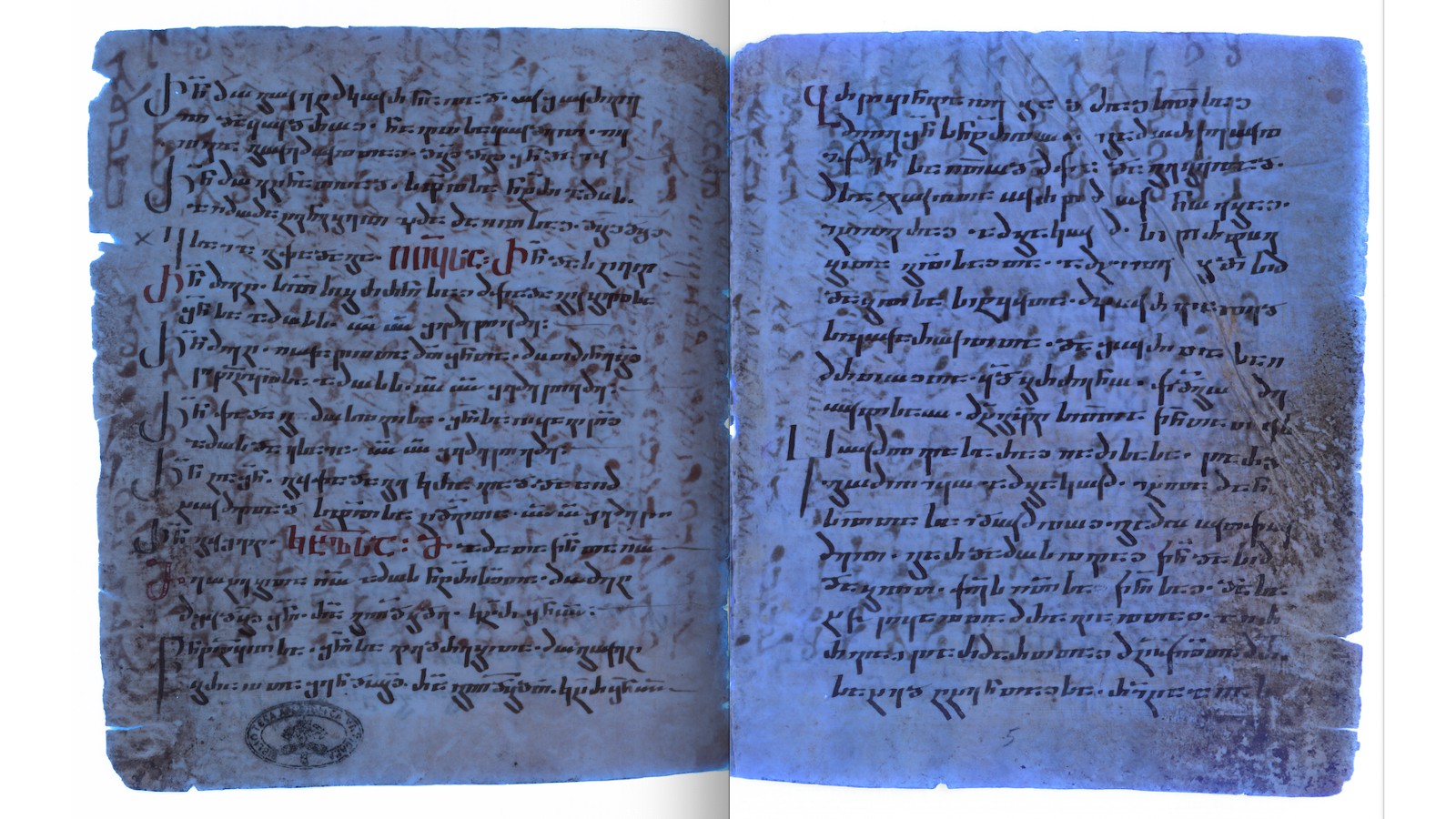
A historian studying a text in the Vatican has discovered a hidden fragment of the Gospel of Matthew, written in Old Syriac, that differs from what is seen today in the Bible.
The alternate version of the gospel was revealed using ultraviolet (UV) photography. As parchment was scarce in the Middle Ages, scribes often reused parchments, writing over older texts, researchers said in a statement.
The most recent text on the parchment is written in Georgian, and there is an earlier text underneath it written in Greek. But when Grigory Kessel, a scholar who studies Syriac with the Austrian Academy of Sciences, examined UV images provided by the Vatican library, he found yet another layer hidden beneath the Greek text.
The Old Syriac text contains part of Matthew 12:1. Kessel speculated that someone copied the verse onto the parchment during the sixth century. Based on the language, Kessel estimates that the original may have been produced in the third century.
Related: Book of Revelation's vision of the apocalypse inspired by pagan curses, researcher claims
This gospel, which has traditionally been attributed to the apostle Matthew, was likely written sometime in the second half of the first century. So the newly discovered text is probably about 200 years younger than the bulk of the gospel.
Today the passage reads: "at that time Jesus went through the grainfields on the Sabbath; and his disciples became hungry and began to pick the heads of grain and eat," the statement noted. However, the recently discovered Old Syriac text says the disciples "began to pick the heads of grain, rub them in their hands, and eat them."
Kessel told Live Science that he is aware of only one other Gospel copy, written in Old Latin, that claimed the disciples rubbed grain in their hands. It's not clear if rubbing the grain had any religious significance.
"This is indeed an exciting discovery, and a brilliant piece of decipherment," Sebastian Brock, a retired professor of Syriac at the University of Oxford, told Live Science in an email. Brock noted that Old Syriac and Old Latin copies of the gospels often differ from other versions of the gospels. The gospels gradually became more standardized during the Middle Ages.
Discoveries like these are "significant for the study of the early history of the text of the New Testament before it reached the form familiar from modern editions and translations," Brock said.







